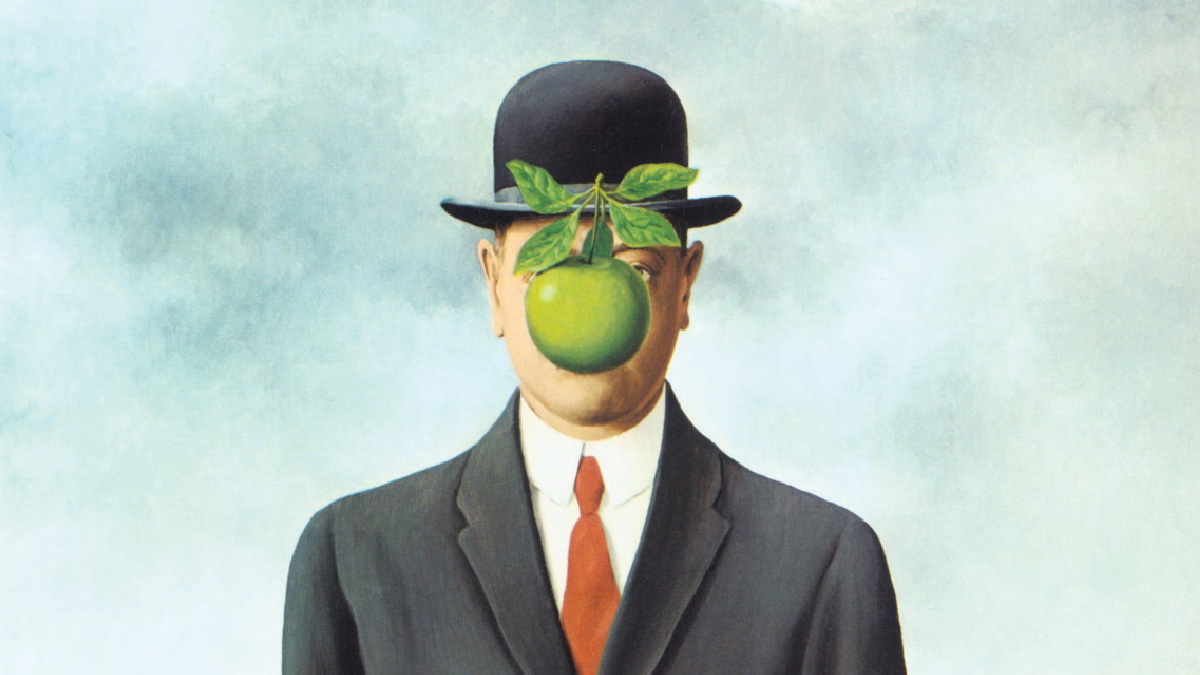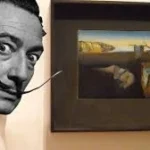
René Magritte, a luminary of the surrealist movement, left an indelible mark on the art world with his iconic painting, “The Son of Man.” Born in Belgium in 1898, Magritte’s artistic journey unfolded against the backdrop of the 20th century, a period marked by profound cultural and intellectual shifts. “The Son of Man,” completed in 1964, stands as a testament to Magritte’s unparalleled ability to blend the ordinary with the extraordinary. In this introductory exploration, we delve into 25 historical facts and numerical trivia surrounding both the artist and his enigmatic masterpiece, offering insights into the life, influences, and enduring legacy of René Magritte.
Artist: René Magritte, born in Lessines, Belgium, in 1898, was a pivotal figure in the surrealist movement. Known for his thought-provoking and meticulously crafted works, Magritte’s artistic contributions extended beyond his contemporaries. His ability to blend everyday objects with enigmatic symbolism set him apart as a master of surrealism.
Date of Creation: “The Son of Man” emerged from Magritte’s canvas in 1964, a period when the surrealist movement was already well-established. The painting, measuring 45 cm × 38 cm, encapsulates Magritte’s mature artistic vision, featuring a mysterious figure with a bowler hat and a hovering green apple obscuring the face.
Medium: Magritte’s chosen medium for “The Son of Man” was oil on canvas, a traditional yet versatile material. This choice allowed him to meticulously render the details in his works, emphasizing the juxtaposition of ordinary objects in extraordinary contexts, a hallmark of his surrealist style.
Size: The relatively modest dimensions of 45 cm × 38 cm belie the impact of “The Son of Man.” The intimate scale draws viewers into the painting, encouraging a closer examination of the details that contribute to its enigmatic charm.
Style: Magritte’s distinctive surrealist style, evident in “The Son of Man,” challenged conventional artistic norms. By juxtaposing familiar elements in unexpected ways, he invited viewers to question reality and engage in a deeper exploration of the subconscious.
Born: René Magritte’s birth in November 1898 marked the beginning of a journey that would lead him to become one of the most renowned artists of the 20th century. Growing up in Belgium, Magritte’s early exposure to art and his experiences during the formative years of the surrealist movement greatly influenced his later work.
Death: Magritte’s artistic journey came to an end with his passing on August 15, 1967, in Brussels. Despite his physical departure, his legacy continued to influence subsequent generations of artists and thinkers, leaving an indelible mark on the world of art.
Influence: René Magritte’s impact on modern art extends far beyond the canvas. His influence can be seen in various art forms, from literature to film, as artists continue to draw inspiration from his innovative approach to surrealism.
Notable Works: Alongside “The Son of Man,” Magritte’s portfolio includes iconic works such as “The Treachery of Images” and “The Lovers,” each contributing to his reputation as a master of visual language and symbolism.
Surrealist Manifesto: The surrealist movement, formally initiated in 1924 with André Breton’s “Surrealist Manifesto,” provided a conceptual framework for artists like Magritte. This manifesto emphasized the exploration of the subconscious, dreams, and the irrational, themes that Magritte skillfully integrated into his body of work, including “The Son of Man.”
Signature Style: René Magritte’s signature style is a mesmerizing fusion of realism and surrealism. His works, including “The Son of Man,” challenge viewers to reconsider the ordinary by placing familiar objects in unconventional contexts. This unique approach to art became a defining characteristic of Magritte’s oeuvre, setting him apart as an artist who bridged the gap between reality and imagination.
Bowers and Apples: The recurrent motifs of the bowler hat and apple in Magritte’s paintings hold symbolic significance. The bowler hat, associated with the conventional and the mundane, becomes a surreal element, while the apple, suspended in the air, adds an air of mystery. Magritte used these symbols to explore the dichotomy between the ordinary and the extraordinary, inviting viewers to delve into the layers of meaning within his works.
Inspiration: “The Son of Man” draws inspiration from biblical references, with the title suggesting a connection to the hidden nature of Jesus Christ. Magritte’s use of religious symbolism adds depth to the painting, encouraging contemplation of spiritual and existential themes within the context of surrealist imagery.
Imagery: The obscured face in “The Son of Man” is a deliberate choice by Magritte, contributing to the air of mystery that permeates his work. By concealing the identity of the central figure, Magritte prompts viewers to project their own interpretations onto the painting, fostering a more personal and subjective engagement with the artwork.
Exhibitions: René Magritte’s works, including “The Son of Man,” have been showcased in prestigious exhibitions around the world. These exhibitions not only solidify Magritte’s place in the art world but also provide audiences with the opportunity to witness firsthand the evolution of his artistic vision.
Legacy: Magritte’s legacy extends beyond the art world, influencing not only visual arts but also literature, philosophy, and popular culture. His impact on the surrealist movement and subsequent generations of artists cements his status as a visionary whose ideas continue to resonate.
Auction Records: In 2018, “The Son of Man” achieved significant recognition in the art market when it was sold at auction for over $25 million. This record-breaking sale underscores the enduring appeal and value placed on Magritte’s masterpieces by collectors and art enthusiasts alike.
Cultural Impact: “The Son of Man” has become an iconic image in popular culture, referenced in films, advertisements, and various artistic expressions. Magritte’s ability to create imagery that transcends its original context speaks to the universal and timeless quality of his work.
Museum Collections: The inclusion of “The Son of Man” in the Ulla and Heiner Pietzsch collection in Berlin emphasizes the painting’s significance in the art world. Museum collections serve as custodians of cultural heritage, preserving Magritte’s masterpiece for future generations.
Books: Numerous books have been dedicated to analyzing Magritte’s life and work, contributing to a rich tapestry of art scholarship. These publications delve into the intricacies of “The Son of Man” and Magritte’s broader body of work, providing invaluable insights into the mind of this surrealist maestro.
Surrealism Today: René Magritte’s influence continues to reverberate in contemporary art. Artists today draw inspiration from his surrealistic vision, incorporating elements of his style into their own works. The enduring relevance of Magritte’s ideas underscores the timelessness of his artistic contributions and the enduring impact of the surrealist movement on the evolution of art.
Art Market: Magritte’s works remain highly sought after in the art market. The demand for his pieces reflects not only their aesthetic appeal but also the enduring fascination with the intellectual depth and philosophical themes embedded in his art. The consistent interest in Magritte’s work speaks to its ability to captivate and resonate across generations.
Symbolism: The green apple, a recurring motif in “The Son of Man,” is laden with symbolic meaning. In Magritte’s oeuvre, the apple represents both the ordinary and the extraordinary, defying gravity as it hovers in mid-air. This symbolism invites viewers to contemplate the juxtaposition of the familiar with the surreal, adding layers of interpretation to the painting.
Restoration: In 2013, “The Son of Man” underwent a meticulous restoration process to preserve its original quality. This effort reflects the commitment to maintaining the integrity of Magritte’s masterpiece, ensuring that future audiences can experience the painting in a condition close to how the artist intended.
Philosophical Themes: Magritte’s exploration of the intersection between reality and illusion, as exemplified in “The Son of Man,” delves into profound philosophical themes. By challenging conventional perceptions and prompting viewers to question the nature of reality, Magritte invites a deeper contemplation of the human experience and the mysteries that lie beneath the surface of everyday life. His ability to infuse art with philosophical inquiry cements his legacy as a visionary thinker within the realm of visual arts.









